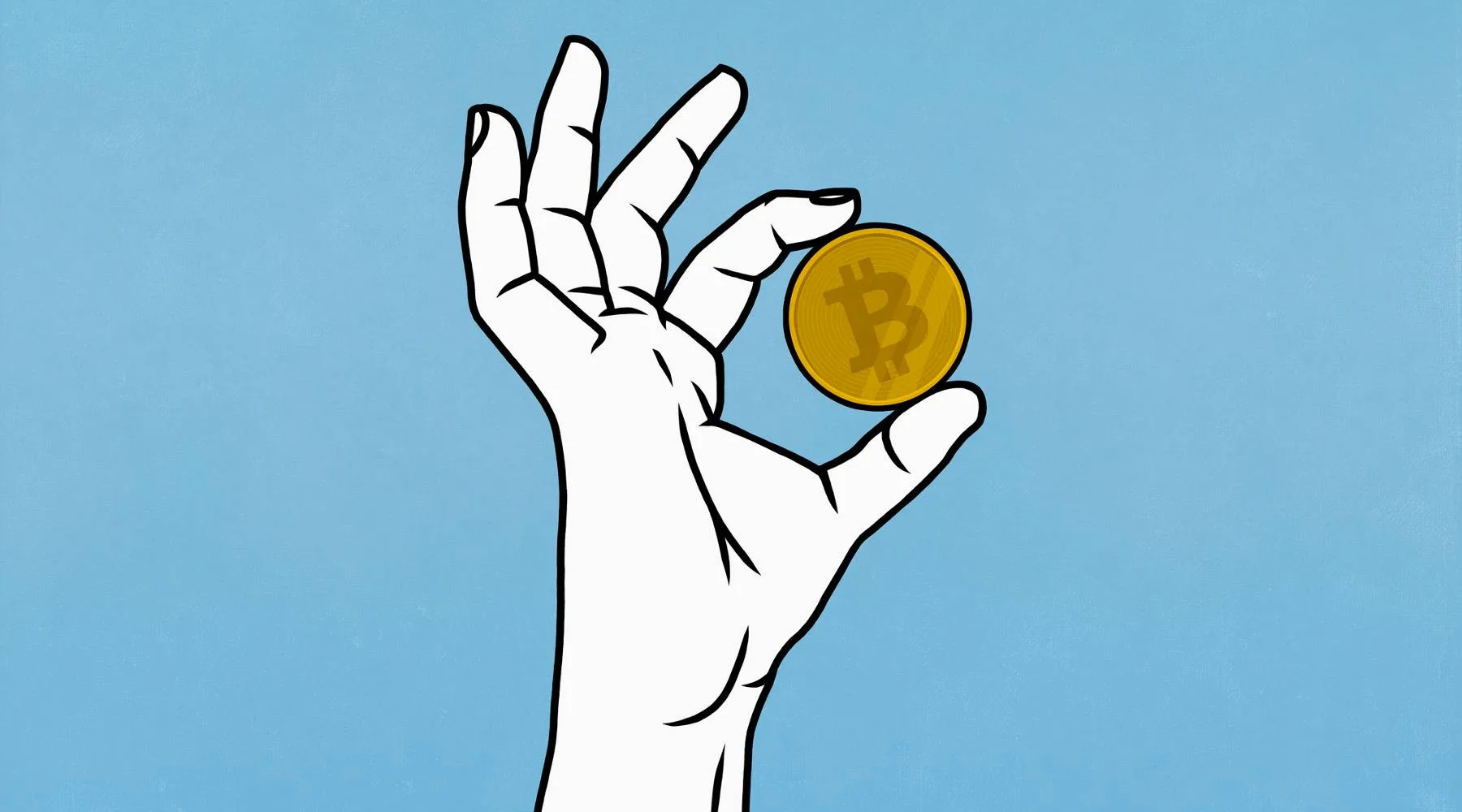Crypto FAQ: Answers to 5 commonly asked crypto-related questions

When considering whether to invest in cryptocurrency, it helps to know a little bit about it first.
 Sponsored by Wealthsimple Crypto. The only platform in Canada that lets you trade stocks and crypto in one app. Trade 55+ tokens. Get $25 when you open and fund your Crypto account with $150. T&Cs apply.
Sponsored by Wealthsimple Crypto. The only platform in Canada that lets you trade stocks and crypto in one app. Trade 55+ tokens. Get $25 when you open and fund your Crypto account with $150. T&Cs apply.

Sponsored by Wealthsimple Crypto. The only platform in Canada that lets you trade stocks and crypto in one app. Trade 55+ tokens. Get $50 when you open and fund your Wealthsimple Crypto account with $150. T&Cs apply.
Cryptocurrency is a relatively new phenomenon and people naturally have questions about what it is and how it works. Having the answers to these 5 questions will go a long way in helping you conceptualize cryptocurrencies and understand their place in your investment portfolio.
This guide, sponsored by Canadian crypto platform Wealthsimple, gives you answers to 5 commonly asked crypto-related questions to help you make the right decisions for you.
1. What is cryptocurrency?
Cryptocurrency comes in many different forms. The first and most well-known cryptocurrency is Bitcoin. Bitcoin can be thought of as digital money or money for the Internet. Many other cryptocurrencies have been built in the last 13 years for a number of different purposes. Some cryptocurrencies can be used for transactions (like LTC for example), others are designed to be held as investments ( such as BTC and ETH in a similar way you’d hold stocks or commodities), and others are referred to as governance tokens (like UNI, and AAVE) since the cryptocurrency doubles as voting power to make decisions.
The takeaway definition is that cryptocurrency is Internet currency. Much like the regular Internet was a new way to transfer information around the globe, cryptocurrency is a new way to transfer value.
2. How is cryptocurrency stored?
Cryptocurrency is stored on computers located all over the world. Any computer that contributes to a particular copy of the blockchain “stores” the fact that a particular user’s cryptocurrency exists. But just because they are storing this record, doesn’t mean they can access, move or transfer the cryptocurrency. Only the holder of a unique piece of text called “a private key” can move cryptocurrency located at a “public address”.
Cryptocurrency storage is analogous to physical mailboxes. There is a piece of public information that tells mail delivery services where to send mail. Then there is a private key that lets the owner of the mailbox retrieve their mail. Cryptocurrency is no different. Only the holder of the private key can access the cryptocurrency located at a public address. This is what cryptocurrency wallets are for. Wallets store the private key safely for the user. So cryptocurrencies themselves aren’t stored in wallets, but the keys that are used to access them are.
3. How can I start trading cryptocurrency?
If you have decided you want to learn more about cryptocurrency and are ready to obtain some, it is best to start slow. Don’t put in any money that you’re not willing to lose. The second piece of advice is that you don’t need to become a trader just because you’ve bought cryptocurrency. Buying and holding for the long term is a strategy that many people are comfortable with, and is the first step in crypto education for the first time crypto buyer.
If you do want to learn how to trade, then it is best to familiarize yourself with trading terminology and a basic trading interface before executing any trades. Learn about market orders, limit orders and stop losses as well as when to use each of them. Lastly, write down a set of rules and price targets for your trades. If you want to buy your first coin CAD$50k and sell it later at CAD$55k, then make sure you stick to your principles. Forming a strong set of principles to use when investing is one of the best ways to have a viable career as a trader.
 [Sponsored] Get a $25 cash bonus and commission-free trades when you open a Wealthsimple Crypto account and deposit and trade at least $150. Sign-up today to take advantage of this offer.
[Sponsored] Get a $25 cash bonus and commission-free trades when you open a Wealthsimple Crypto account and deposit and trade at least $150. Sign-up today to take advantage of this offer.

Sponsored: Get a $25 cash bonus and commission-free trades when you open a Wealthsimple Crypto account and deposit and trade at least $150. Sign-up today to take advantage of this offer.
4. What is blockchain?
Blockchain is the technology behind every cryptocurrency. The purpose of a blockchain is to record each transaction that takes place on a network and make it permanent. Transactions are made between users. These transactions are then organized or batched into blocks. Then, every so often (for example, every 10 minutes), the computers that are running the network reach a consensus on which transactions took place within that period. Once consensus is reached, the latest block of transactions is added to the end of the blockchain. This process of batching transactions into blocks and adding them to the chain continues forever.
5. What is DeFi?
DeFi is short for “decentralized finance”. It is the idea that people no longer need to get financial services from centralized service providers such as banks. The same services can now be offered to people through cryptocurrencies. It helps to break financial services into 4 categories: storage, transfers, credit and investments (equities and commodities). Digital coins like Bitcoin and Litecoin, for example, offers its users the ability to store and transfer money on the Internet without needing to have identification or permission to use its services. Other cryptocurrencies, for example ETH and ADA, enable a wider range of financial services, such as credit (borrowing and lending) and alternative investments in a wide range of other cryptocurrencies.
While DeFi is a big topic, it is crucial to understand that it represents a shift away from centralized financial institutions and in some cases, the services offered by blockchain networks are comparable to those provided by banks. These decentralized applications (dApps) don’t require permission to use or people to run them. Lastly, DeFi stands to make the full breadth of financial services accessible to anyone with an Internet connection. DeFi has the potential to allow a much wider degree of participation in the global economy than what was ever before possible.
Your cryptocurrency journey
These are just 5 of the questions that people have when being introduced to cryptocurrency. There are, of course, many more aspects, definitions, acronyms and nuances to the answers that were given above. It’s recommended that you absorb one teaching at a time, then try to do something that puts what you’ve learned into practice. Reading is one thing, but doing it is really what tests your knowledge. This is all just part of your crypto journey.
Finder Score for crypto exchanges
To make comparing even easier we came up with the Finder Score. Supported coins, account fees and features across 28 cryptocurrency trading platforms are all weighted and scaled to produce a score out of 10. The higher the score, the better the exchange—simple.
Compare other cryptocurrency exchanges here
Sponsor video

